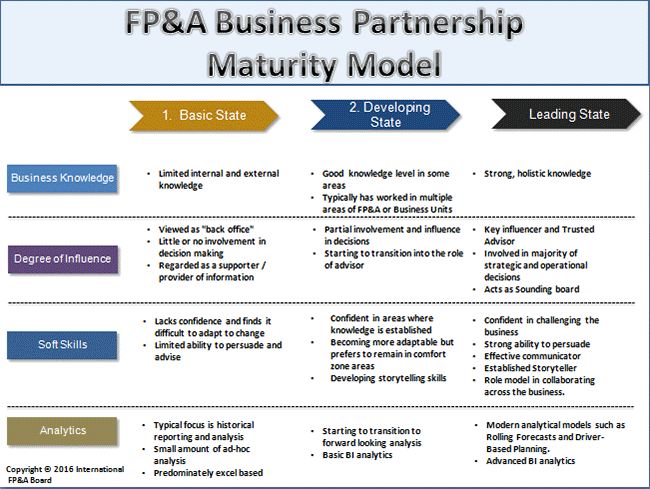 We only need to look at the evolution of the mobile phone to understand why the role of the FP&A business partner has changed. In 2000, I began my career in FP&A as an analyst at Silicon Graphics, the same year that the iconic Nokia 6210 was launched. Back then the functionality of the mobile phone was limited to voice calls and simple text messages. Who would have thought that 16 years later, we would be using mobile phones to pay our bills, control our heating, take part in video conferences and monitor our health? The mobile phone “app” economy has transformed our day to day lives.
We only need to look at the evolution of the mobile phone to understand why the role of the FP&A business partner has changed. In 2000, I began my career in FP&A as an analyst at Silicon Graphics, the same year that the iconic Nokia 6210 was launched. Back then the functionality of the mobile phone was limited to voice calls and simple text messages. Who would have thought that 16 years later, we would be using mobile phones to pay our bills, control our heating, take part in video conferences and monitor our health? The mobile phone “app” economy has transformed our day to day lives.
As technology has continued to evolve at an increasing speed and the business environment has become so complex and volatile, decisions have to be made quickly and the demand for timely, flexible, forward-looking analysis has transformed the role of the FP&A business partner.
In 2000, FP&A was seen as a back office function. A provider of historical data, it was often regarded as the “Scorekeeper” focused on producing routine management reports with limited forward-looking capability.
Now regarded as “First Officer” to decision makers, a leading FP&A business partner is a trusted advisor on strategic and operational decisions. Acting as sounding board, the FP&A partner must have a deep understanding of the business so that they are trusted by the business.
Combined with knowledge, it is the soft skills of the FP&A business partner that will affect the amount of value they will bring to the business. Strong influencing and effective communication skills are essential and will increase their ability to advise and challenge the business. Those that collaborate, involve the business in their modeling and can adapt quickly, are more likely to build up trust quicker and transform from the role of “match scorekeeper” to being part of the “team selection committee”.
In terms of analytics, traditional methods have been replaced by “real time” dashboards and techniques such as Rolling Forecast and Driver-Based Planning models, which are much more effective tools in this dynamic business environment.
Recently I worked closely with the London FP&A board to develop the FP&A business partnering maturity model that provides other FP&A professionals with a framework to assess and develop their own business partnering skills. The FP&A Business Partnering was the focus of the most recent meeting, sponsored by Michael Page and Metapraxis, which was held on the on the 15th of September, 2016.
As a group, we discussed specific actions an individual or team could take in order to “move up” the maturity model, such as how an individual could build up knowledge of the business. Recommendations included gaining experience in other areas of the business through job shadowing, side-ways career moves or getting involved in cross-functional projects in order to increase exposure to the business.
The world may be constantly changing but one thing is certain that the demand for a strong FP&A business partner has never been so high.



